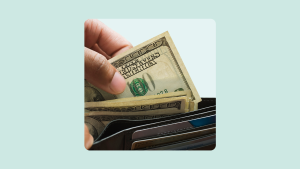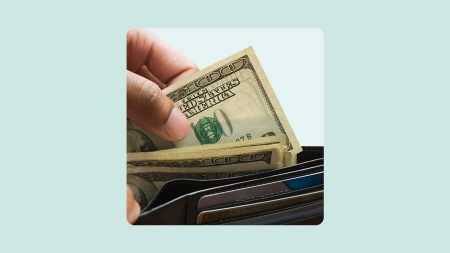Decentralized apps, or dApps, are software programs that are powered by cryptocurrency. By paying with crypto coins, users can receive various software-enabled services, such as digital wallets or games. So if you think of cryptocurrency as a token that pays for machines to run, then dApps function like a video arcade, where clients can deposit money to use the service.
Here’s how dApps work — pronounced dee-Apps or perhaps simply daps, depending on who you ask — and why they’re key to moving forward the promises of the so-called Web3.
What are dApps and how do they work?
Decentralized apps and traditional apps look similar in many respects, offering a service, for example, running a social network, making a stock trade or handling some other rote task. The key difference between these two app types is that dApps use blockchain technology, which is a database that records every transaction running on, typically, a decentralized computer network.
To use a dApp, a user pays some amount of cryptocurrency to enable a smart contract, a kind of contract that automatically executes once certain conditions are met. For example, a smart contract might execute a stock trade, like the arcade running a game after you deposit a token.
The blockchain database allows every action to be executed and recorded on a distributed ledger, decentralizing the entire process and removing centralized oversight of the process. However, frequently dApps are open source, meaning that any person can see the code behind the app and even make their own contributions to it.
“Whether a user is creating an account, purchasing a digital item, placing a trade or transferring assets, they only need to trust the open-sourced smart contract code and the underlying decentralized network,” says Eric Chen, CEO and co-founder of Injective Labs, a company that creates and develops decentralized financial markets.
“All activity is also logged and secured on-chain, so that everything is fully visible and uneditable, creating full transparency and accountability for the end-user,” says Chen.
This transparency “allows users to verify that the dApp is running as intended and that there is no fraud or cheating taking place,” says Aaron Rafferty, co-founder of BattlePacs, a voter engagement platform that uses blockchain and non-fungible tokens (NFTs) to spark political discussions.
What are some popular dApps and why would someone use them?
The broad appeal for dApps is that they give users increased privacy and greater security than traditional apps, providing valuable benefits to users. Decentralized apps may perform a variety of different functions, but they’re often focused on a few different areas.
- Decentralized exchanges: Decentralized exchanges allow clients to trade cryptocurrencies or NFTs among each other, peer-to-peer. Without a single point of failure, says Rafferty, the exchange becomes more robust and “less likely to be hacked or shut down.” Since they rely on a “trustless” network, users are not forced to provide personal information, though they may be legally obligated to in some areas.
- Yield platforms: A yield platform is part of what’s called DeFi, for decentralized finance. A yield platform allows the owner of cryptocurrency to earn interest as part of a loan or from providing liquidity on an exchange, among other income-generating ideas.
- Wallets: A crypto wallet works much like an analog wallet, allowing a crypto owner to hold, spend and receive cryptocurrencies. They can be used to sign transactions and manage private crypto accounts, among other features.
- Games: Games are a popular form of dApp, allowing players to earn and use virtual currencies.
And dApps may feature other popular services such as messaging apps, social media and video streaming platforms off a decentralized blockchain platform. DApps provide a use case for cryptocurrency, given its limited uses in the real world.
“These dApps often offer a higher degree of privacy and security than their centralized counterparts,” says Rafferty, who notes the immutable nature of blockchain-based dApps.
“Once something is put on the blockchain, it cannot be taken off or changed without the network consensus,” he says. “This allows developers to create more secure and reliable applications, which in turn provides users with a better experience.”
The open-source nature of dApps may help build resilience among the entire network, too.
“For example, decentralized exchanges can form an ecosystem with strongly linked incentives to add features and product offerings for users at an exponential rate, which is something a centralized exchange cannot do,” says Chen.
What are the downsides to dApps?
While dApps may create (or re-create) many popular services or platforms on the traditional internet, they’re not without significant issues for users.
- Bad coding: One of the biggest concerns with dApps is the coding itself, particularly around smart contracts. The smart contract or the dApp is only as good as the code underlying it. If you’re paying for a specific service, you may not get what you’re paying for. Further, smart contracts are unalterable after they’re in place, say experts, meaning you could be out of luck and money.
- Potentially expensive: It can be expensive to use dApps, depending on exactly what you’re doing and when. For example, if you’re using a wallet to send cryptocurrency, it may end up costing a significant amount to do so. And that cost may change depending on when exactly you’re looking to use the service.
- Potentially enables illegal activity: One of the major use cases for cryptocurrency is to enable payment for illegal goods and services or to facilitate money laundering. “It is important to research a dApp before using it, and to use caution when sending or receiving payments,” says Rafferty.
- No guarantees about profitable trades: A dApp may enable trading in virtual assets or cryptocurrencies, but that alone won’t make them a profitable trade. As the user, you’ll have to decide whether it makes sense to use the dApp to trade or lend cryptocurrency, for example. The dApp merely facilitates the transaction.
- Security issues: A poorly coded smart contract could also expose users to financial loss if the contract involves a financial transaction of some sort. Hackers have increasingly targeted smart contracts because of the potential payoff if successful.
“DApps are still in their early stages of development, and as such, they may be subject to technical risks,” says Rafferty.
Bottom line
The appeal of dApps may be significant if you’re looking for specific features that make use of blockchain technology’s strongest suits, including privacy and immutability. But dApps still present significant risks for users who are looking to conduct financial transactions, though even these risks may make sense for users looking to avoid oversight on some kinds of transactions.
Read the full article here












